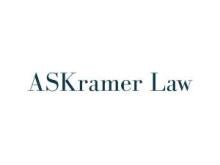Which transactions qualify as section 988 transactions?
In section 988 transactions, the taxpayer makes payments or receipts denominated in or determined by reference to one or more nonfunctional currency. In addition to dispositions of nonfunctional currency (addressed in Part II), section 988 transactions include the following:
- Debt instrument transactions
- Expense or income items paid or received after accrual
- Financial instrument transactions marked-to-market as a section 1256 contract if held on the last business day of the taxable year[1]
- Regulated Futures Contract (RFC) or nonequity option transactions if the taxpayer elects into section 988[2]
Let’s review each of them.
How is a debt instrument defined for purposes of section 988?
A section 988 transaction includes the acquisition of a debt instrument or becoming the obligor under a debt instrument that is denominated in or determined by reference to a nonfunctional currency.[3] Debt instruments include bonds, debentures, notes, certificates, or other evidence of indebtedness.[4]
Is preferred stock treated as a debt instrument for purposes of section 988?
Maybe. The Code states that preferred stock can be included as debt instruments to the extent provided in Treasury Regulations.[5] An instrument labelled or titled as preferred stock is not necessarily taxed as such for U.S. federal income tax purposes. Preferred stock can be viewed as a debt instrument if it is treated as a debt instrument under case law, IRS guidance, or Treasury Regulations.[6] The legislative history that accompanied enactment of section 988 does not provide guidance as to when preferred stock might be treated as a debt instrument for application of section 988. At the date of this writing, we don’t have regulations including preferred stock.
What is “an expense or income item paid or received after accrual”?
“An expense or item paid or received after accrual” is “any item of expense or gross income or receipts which is to be paid or received after the date on which so accrued or taken into account.”[7] A section 988 transaction includes a payable relating to the cost of goods sold, or a payable or receivable relating to a capital expenditure or receipt.[8] In addition, a payable relating to foreign taxes falls into this category.[9]
Must a taxpayer elect into section 988 to treat RFCs and nonequity options on foreign currencies as section 988 transactions?
Yes! This important election is often overlooked by taxpayers. RFCs and nonequity options that would be marked-to-market under section 1256 are not taxed as section 988 transactions unless the taxpayer affirmatively elects into Code § 988.[10] Taxpayers often incorrectly assume that foreign currency-related RFCs and nonequity options would automatically be subject to section 988.[11] If a taxpayer elects into Code § 988 for its RFCs and nonequity options, their gains and losses are ordinary under Code § 988, while they remain subject to Code § 1256 mark-to-market.[12] Treasury Regulations provide detailed election requirements that taxpayers must comply with to elect into section 988.[13]
Investors and traders usually get capital gain or loss on their capital assets. Why do they get ordinary treatment on those section 988 transactions that are capital assets in their hands?
Section 988 provides ordinary income or loss for all taxpayers without regard to whether the section 988 transactions are capital or ordinary. Ordinary treatment for section 988 transactions is based on the premise that exchange rate changes (such as foreign currency value fluctuations) are a function of interest rates.[14] A taxpayer’s status as an investor, trader, dealer, or hedger is irrelevant: the general tax rules that apply to capital transactions are ignored for section 988 transactions.[15] In adopting this blanket rule, Congress concluded that treating foreign exchange gains and losses as ordinary provides a “pragmatic solution.”[16]
Can a taxpayer get capital gain on any foreign currency transactions?
Yes, for some transactions. A taxpayer can elect out of section 988 for certain foreign currency transactions that would be capital assets in the taxpayer’s hands if section 988 did not apply. With this election, a taxpayer would treat all of its section 988 transactions as ordinary. Under the election, however, section 988 gain or loss is treated as capital if the foreign currency contract is a capital asset in the taxpayer’s hands and the taxpayer has properly identified the transaction before the close of the day on which it is entered into.[17]
Which foreign currency transactions qualify for election out of section 988?
A taxpayer can elect out of section 988 on a transaction-by-transaction basis if it meets five requirements:
- Gain or loss must be a forward contract, futures contract, or option contract that is otherwise classified as a section 988 transaction.[18]
- The position must be a capital asset in the taxpayer’s hands.
- The position must not be part of a tax straddle.[19] If a contract subject to the election out of Code § 988 is part of a tax straddle or it subsequently becomes part of a tax straddle, the election is invalid, and gains are treated as ordinary. The IRS has the authority to invalidate any elections with respect to losses. As a result, if the IRS does nothing, the losses are capital under the taxpayer's election out of section 988. If the IRS invalidates the election, however, losses are ordinary under section 988.
- The position cannot be an RFC or a listed nonequity option unless the taxpayer has elected into section 988.[20]
- The taxpayer must elect out of section 988 and comply with all of the identification requirements, including identifying the transaction before the close of the day on which the transaction is entered into.
What is the source of section 988 foreign currency gains and losses?
The domestic or foreign source of section 988 gains and losses is determined based on the residence of the taxpayer on whose books the asset, liability, or item of income or expense is properly reflected.[21] The residence of the taxpayer is treated as the source for foreign currency gain, losses, and financial instruments covered by an election out of section 988.[22] This means that most U.S. taxpayers treat foreign currency gain and loss as domestic source income, with some exceptions:
- If a taxpayer is a nonresident alien (or a foreign corporation engaged in a U.S. trade or business), exchange gain or loss is treated as fixed or determinable annual or periodic income from U.S. sources.[23]
- Interest income or expense under Treasury Regulation section 1.988-3(c)(1) are sourced, allocated, and apportioned under the tax rules applicable to interest.[24]
- The foreign currency hedging provisions at section 988(d) can alter the sourcing rules for interest.[25]
- A special sourcing rule is provided for certain related high-interest loans that are denominated in (or determined by reference to) a foreign currency.[26]
How is a taxpayer’s residence defined for sourcing purposes?
Individuals
An individual’s residence is the country in which the individual’s tax home is located.[27] “Residence” is often the place where the taxpayer incurs deductible expenses while traveling on business away from home.[28] If U.S. citizens or resident aliens do not have a tax home, it is deemed to be the United States.[29] If individuals are not U.S. citizens or resident aliens, they are nonresident aliens.[30]
Corporations
Corporations organized under the laws of the United States, the District of Columbia, or one of the states are treated as U.S. residents. All other corporations are treated as residents of foreign countries.[31]
Partnerships
Partnerships that are U.S. persons are residents of the United States.[32] A partnership is treated as a U.S. resident if it is organized under the laws of the United States, the District of Columbia, or one of the states. All other partnerships are treated as residents of foreign countries.[33] A partner’s distributive share of the partnership’s gain or loss from foreign currency transactions has its source in the partner’s country of residence.[34] There is an anti-abuse provision. If a partnership is “formed or availed of to avoid tax by altering the source of exchange gain or loss,” its residence is ignored for tax purposes.[35]
Estates or Trusts
If an estate or trust is a U.S. person, its residence is the United States.[36] All other estates and trusts are not treated as residents of the United States.[37]
[1] Code § 988(c)(1)(D)(i).
[2] Election is available at Code § 988(c)(1)(D)(ii). See also Pub. L. No. 100-647, 102 Stat. 3342 (1988) (The Technical and Miscellaneous Revenue Act of 1988 (TMRA ’88). Before TMRA ’88, the section 988 transaction definition excluded those transactions subject to the mark-to-market rules of Code § 1256(a). TMRA ’88 modified the section 988 definition so that the carve-out for section 1256 transactions only applies to RFCs and nonequity options.
[3] Code § 988(c)(1)(B)(i).
[4] Code § 988(c)(4).
[5] Id.
[6] Id.
[7] Code § 988(c)(1)(B)(ii).
[8] Treas. Reg. § 1.988-1(a)(2)(ii).
[9] Id.
[10] Code §§ 988(c)(1)(D)(i), (ii).
[11] Code § 988(c)(1)(D)(ii).
[12] Code § 988(c)(1)(D)(ii).
[13] Treas. Reg. § 1.988-1(a)(7)
[14] See S. Rep. No. 313, 99th Cong., 2d Sess. (1986), at 452. In effect, prior to enactment of Subchapter J, foreign currency gain or loss generally was treated as gain or loss from the sale of property. This characterization was abandoned by TRA ’86 for section 988 transactions.
[15] Treas. Reg. § 1.988-3(a).
[16] S. Rep. No. 313, 99th Cong., 2d Sess. (1986) , supra note 14, at 452.
[17] Code § 988(a)(1)(B).
[18] Treas. Reg. § § 1.988-2(d)(1) and 1.988–1(a)(1)(ii) and (2)(iii).
[19] As defined in Code § 1092(c) without regard to Code §1092(c)(4).
[20] Code § 988(c)(1)(D)(ii).
[21] Code § 988(a)(3); Treas. Reg. §1.988-4(a).
[22] Code § 988(a)(3).
[23] Treas. Reg. § 1.988-4(c).
[24] The sourcing provisions related to interest are Code §§ 861(a)(1), 862(a)(1), 864(e). Treas. Reg. § 1.988-4(f).
[25] Treas. Reg. § 1.988-5. I will discuss foreign currency hedging in Parts IV and V of this series.
[26] Treas. Reg. § 1.988-4(e).
[27] As defined in Code § 911(d)(3); Code § 988(a)(3)(B)(i)(I); Treas. Reg. § 1.988-4(d)(1)(i).
[28] Code § 911(d)(3); Treas. Reg. § 1.988-4(d)(1)(i).
[29] Code § 988(a)(3)(B).
[30] Id.
[31] Code § 988(a)(3)(B)(i)(III).
[32] As defined in Code § 7701(a)(30); Code § 988(a)(3)(B)(i)(II). Treas. Reg. § 1.988-4(d)(1)(ii).
[33] Code § 988(a)(3)(B)(i)(III).
[34] Id.
[35] Treas. Reg. § 1.988-4(d).
[36] As defined in Code § 7701(a)(30); Code § 988(a)(3)(B)(i)(II). Treas. Reg. § 1.988-4(d)(1)(ii).
[37] Code § 988(a)(3)(B)(i)(III).




 />i
/>i
